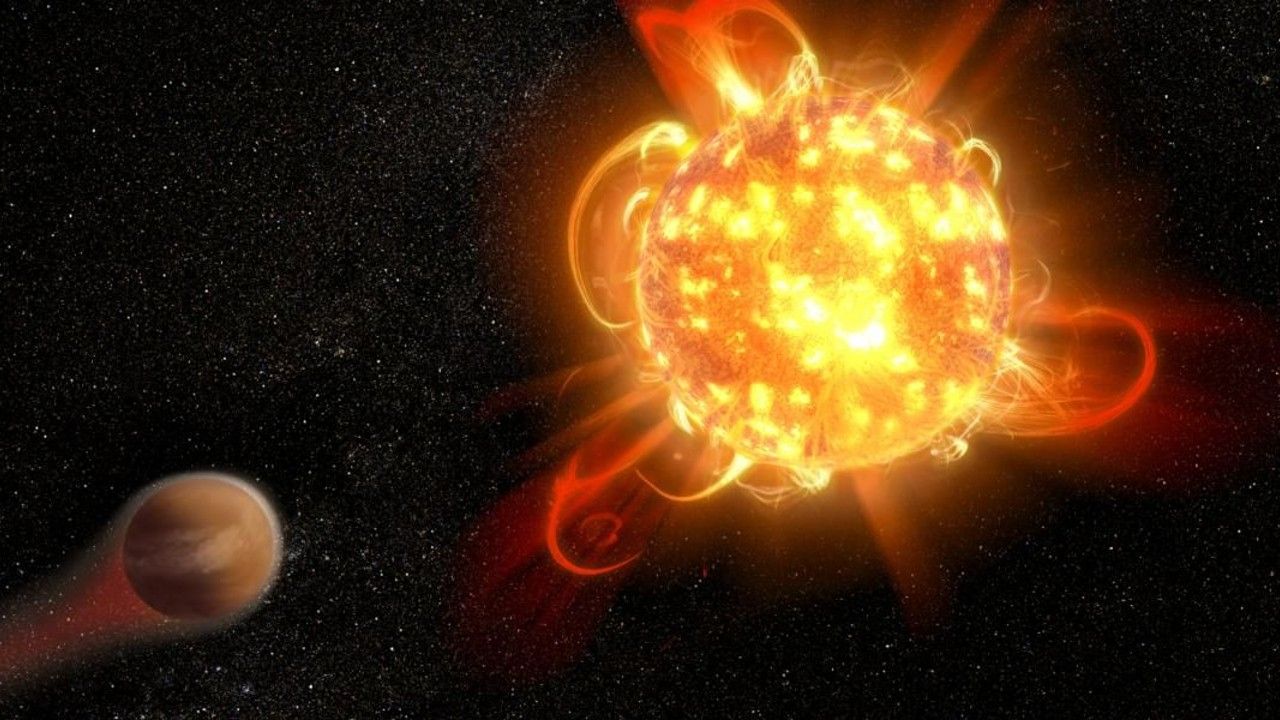An estimated 75 to 80 percent of the stars in the Milky Way are M-class red dwarfs, and if they are highly unlikely to support planets with life, that rules out a huge proportion of star systems that could possibly host advanced intelligent alien life, or any life at all.
A new study of red dwarf stars has revealed that even the quietest examples of this stellar class are more active and wild than the sun.
Red dwarfs, officially known as "M dwarfs" by astronomers, are the most common stars in the Milky Way and can remain placid for long periods of time before erupting with huge "superflares." These flares have previously been measured to be 100 to 1,000 times more powerful than similar flares from the sun, with young red dwarfs particularly tumultuous.
These outbursts, as well as eruptions of scorching-hot plasma known as coronal mass ejections (CMES), can be incredibly destructive to planets orbiting red dwarfs, stripping their atmospheres and emitting enough radiation to boil away liquid water even in the so-called habitable zone around them — the region around a star in which liquid water can exist on a world's surface.
Such high activity might therefore make it tough for life to take root around red dwarfs, some scientists say.
Because astronomers have struggled to study individual red dwarfs in detail, the next best thing is looking at a lot of these stars over a long time period. A long view is needed to really get a clear picture of red dwarf variability,

 www.space.com
www.space.com
A new study of red dwarf stars has revealed that even the quietest examples of this stellar class are more active and wild than the sun.
Red dwarfs, officially known as "M dwarfs" by astronomers, are the most common stars in the Milky Way and can remain placid for long periods of time before erupting with huge "superflares." These flares have previously been measured to be 100 to 1,000 times more powerful than similar flares from the sun, with young red dwarfs particularly tumultuous.
These outbursts, as well as eruptions of scorching-hot plasma known as coronal mass ejections (CMES), can be incredibly destructive to planets orbiting red dwarfs, stripping their atmospheres and emitting enough radiation to boil away liquid water even in the so-called habitable zone around them — the region around a star in which liquid water can exist on a world's surface.
Such high activity might therefore make it tough for life to take root around red dwarfs, some scientists say.
Because astronomers have struggled to study individual red dwarfs in detail, the next best thing is looking at a lot of these stars over a long time period. A long view is needed to really get a clear picture of red dwarf variability,

Bad news for alien life? Even calm red dwarf stars rage more violently than the sun
Red dwarfs are small, but their outbursts are not.

